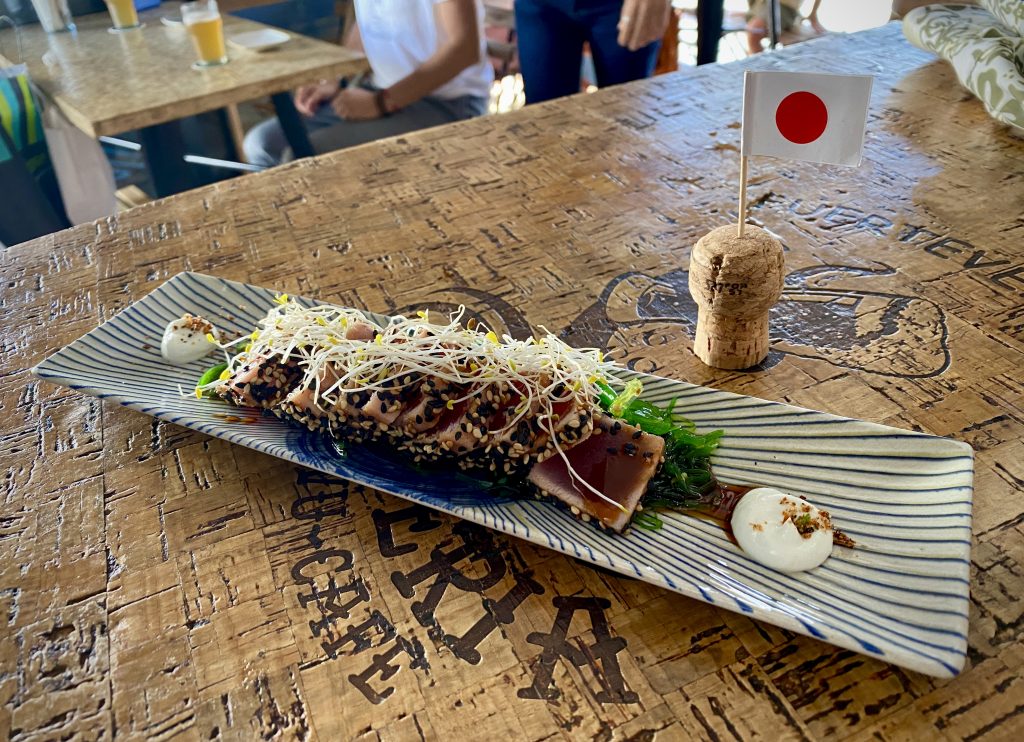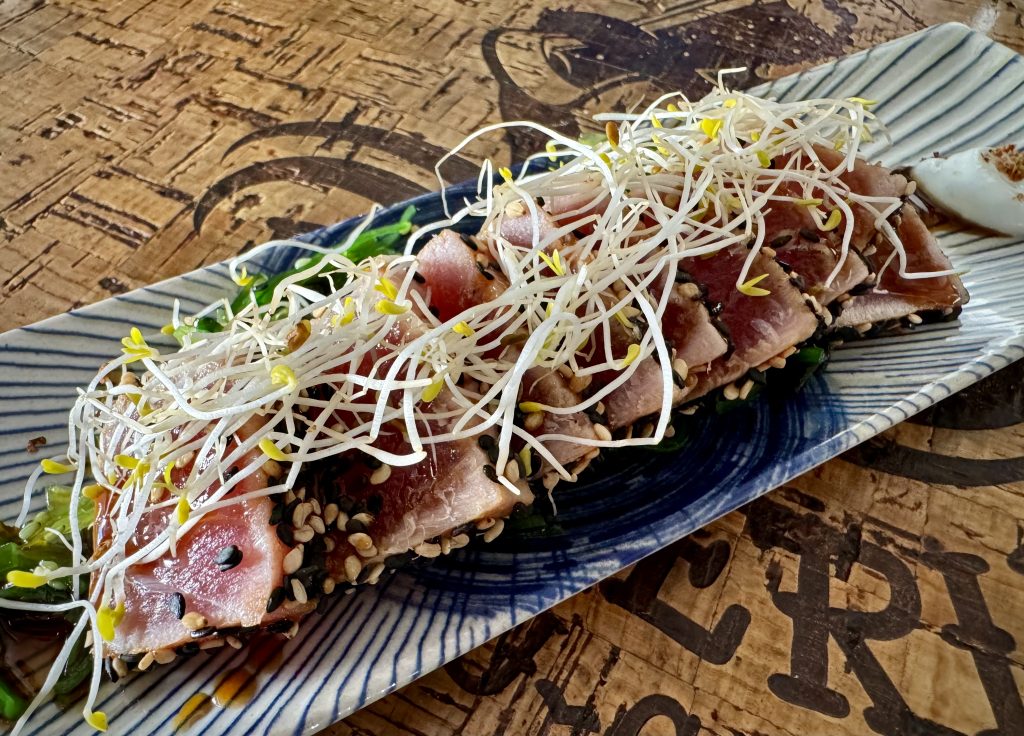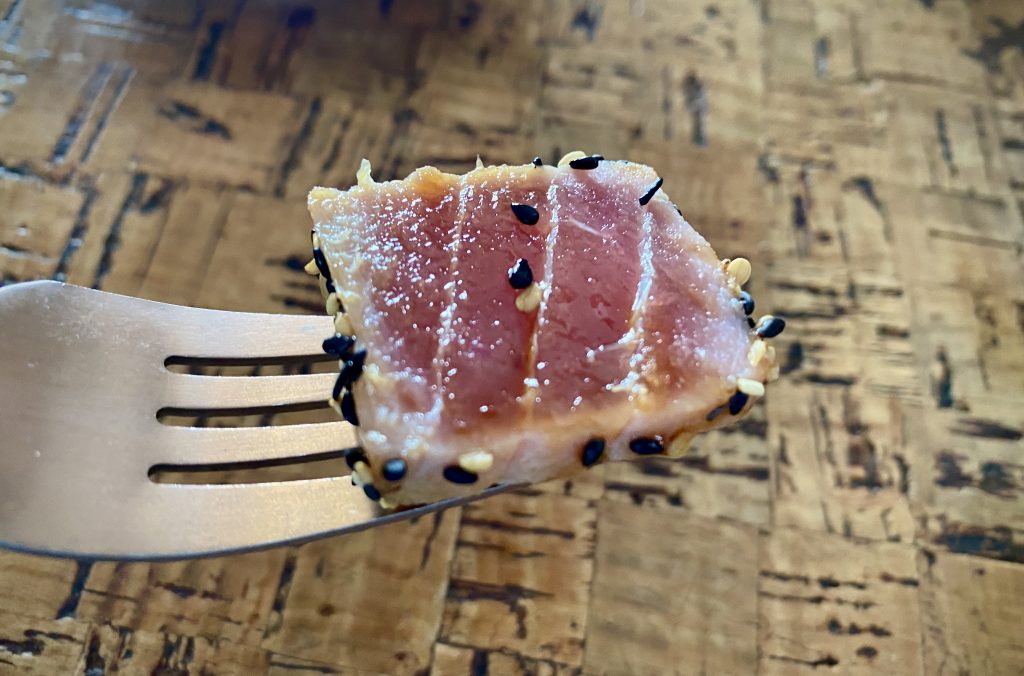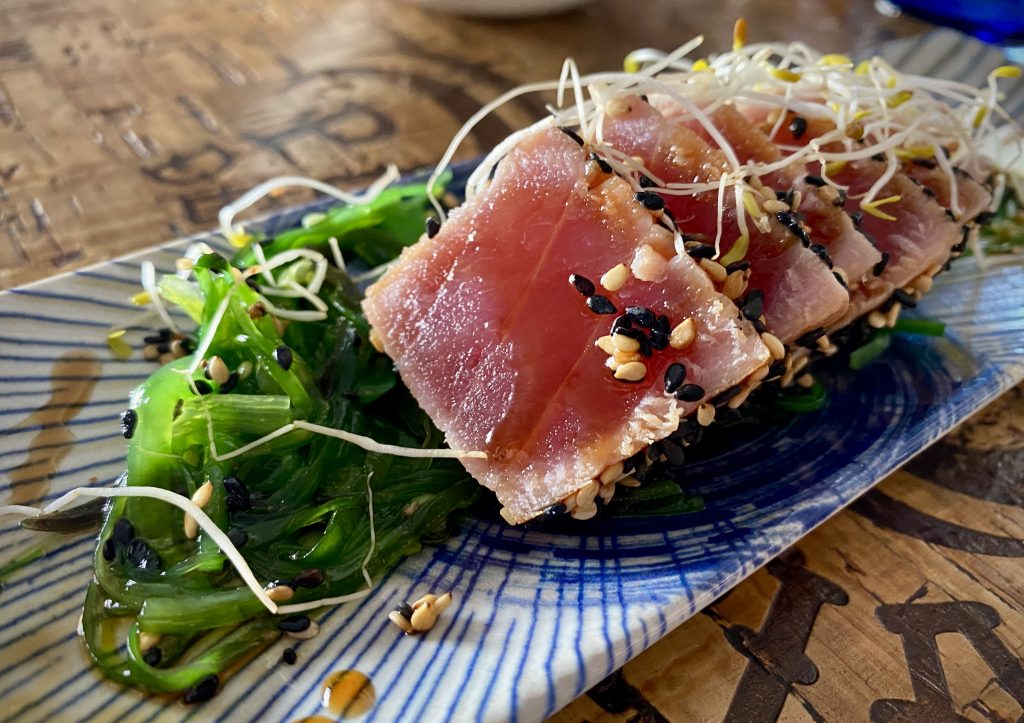
OK, I’m pretty excited about this one. This post marks the first Tribudishional review outside the UK – and hopefully by no means the last.
Tuna Tataki is a traditional Japanese dish, made by lightly searing sashimi grade tuna, before slicing and serving it with a soy sauce glaze. As you can probably imagine, finding this in a Spanish tapas bar in Fuerteventura took quite a bite of searching. But wow… it sure was worth it.
As soon as the plate (€7.90) arrived at my little bar table in Pulperia Dejavu Café, I knew I was in for a treat. The dish’s beautiful presentation was the first sign it would be a great meal: framed by a toasted sesame crust, each slice of tuna was expertly stacked against one another, laying on a bed of wakame seaweed and finished with daikon radish sprouts.

Tataki, which roughly translates to “hit into pieces” in Japanese, can actually refer to two different methods of preparing fish. The first is what I had here, where the tuna is quickly seared in a hot pan, letting the outside cook, but keeping the inside raw (this tuna is sashimi grade, so completely safe to eat raw). Some sources claim this technique to have been developed by Sakamoto Ryōma, a 19th-century samurai, who first flash-seared bonito fish to create a dish called katsuo-tataki after being inspired by European methods of grilling meat.
The second tataki technique is one that more closely aligned to its direct translation: the raw fish is finely chopped and mixed with aromatics, creating a sort of tartare. Regardless, it was the former method that was done here, and done very well too.
During tataki preparation, the few seconds of fierce heat allow the first centimetre or so of the meat to cook, and the subsequent step of plunging the tuna into a bath of rice vinegar or ice water cools the fish sufficiently to halt the cooking process. One is left with a pinkish-red circle encompassed by a white ring – a pattern that was observed by my dinner companion as looking strikingly similar to the Japanese flag.

The texture variation throughout each bite was truly fabulous; crunchy toasted sesame contrasted the fish’s velvety interior beautifully, and everything was underpinned by a mellow tuna flavour. The only downside? I don’t know if I can ever go back to tinned tuna.
There’s no question that the meat was the star of the show here, but that’s not to say its accompaniments were subpar, by any means. The wakame seaweed, for starters, was lovely. Often sold dried, this seaweed expands massively on rehydration, regaining its vibrant green colour and slightly sweet flavour. Here, its texture was not dissimilar to that of the tuna, and so it complimented the dish well. A noticeable umami flavour (see below) came with the seaweed too, something that was bolstered by the glaze.

Ponzu – a mirin, soy and citrus sauce – is usually found with tataki, and Pulperia’s sauce was certainly a derivative of this. Amongst all the other flavours, it was difficult to discern the individual elements of their glaze, but soy sauce’s distinct taste certainly shone through, along with a slight citrusy undertone. It’s hard to think of anything else more well-suited to accompany my tuna.
To finish it all off, a layer of peppery daikon radish sprouts adorned the top of my tataki, bringing the fifth and final element of taste to the mix, with its slight bitterness. Science tells us that we can taste five distinct flavours you see, those being sweet, salty, sour, umami (also known as the ‘savoury’ flavour) and bitter. The best dishes are those that encompass all of these aspects, and here, every box was ticked.
The wakame brought the sweetness and saltiness, the sauce an element of sourness, the tuna added umami, and the daikon garnish gave a gentle bitterness. It’s clear to see then, that a lot of thought had gone into this tapas meal. And it sure paid off.
Tribudishional score 10/10.
©The Tribudishional Food Blog / 2024

A Beautiful dish, I can almost taste it 😊
And I would love to have it again!